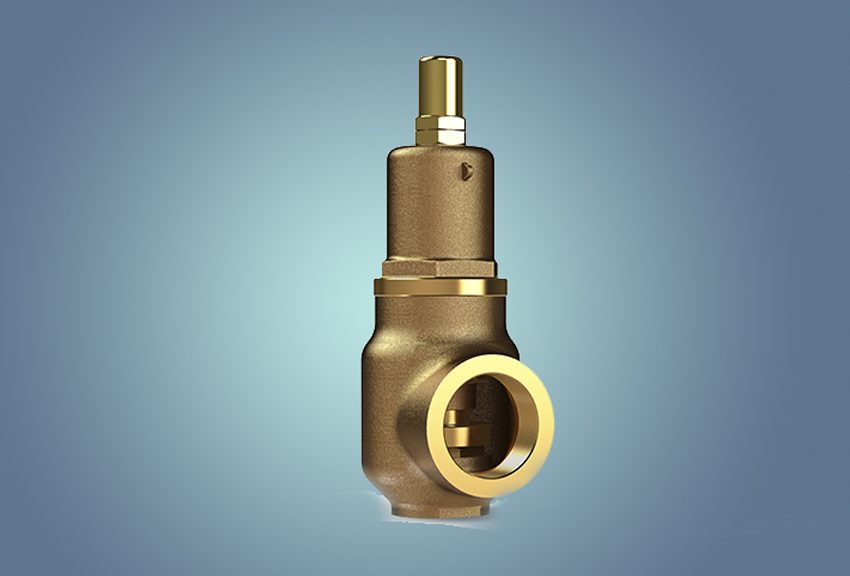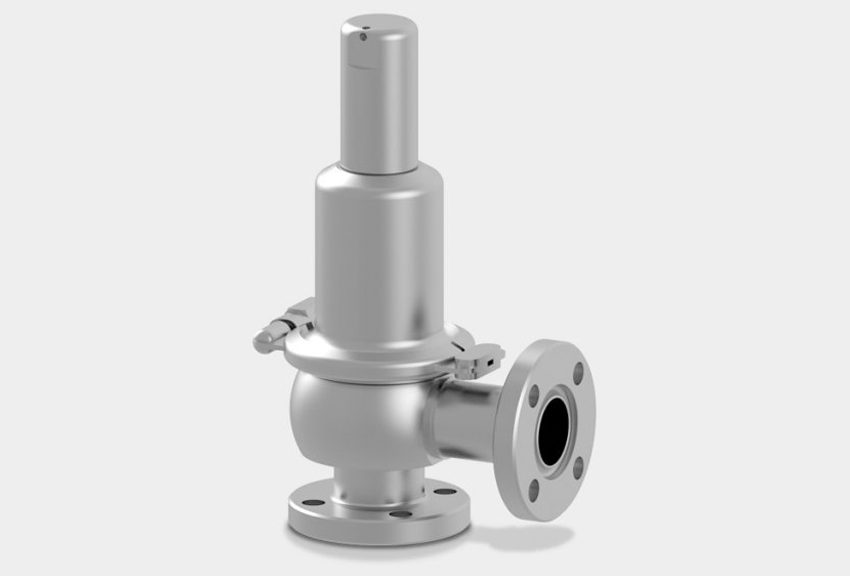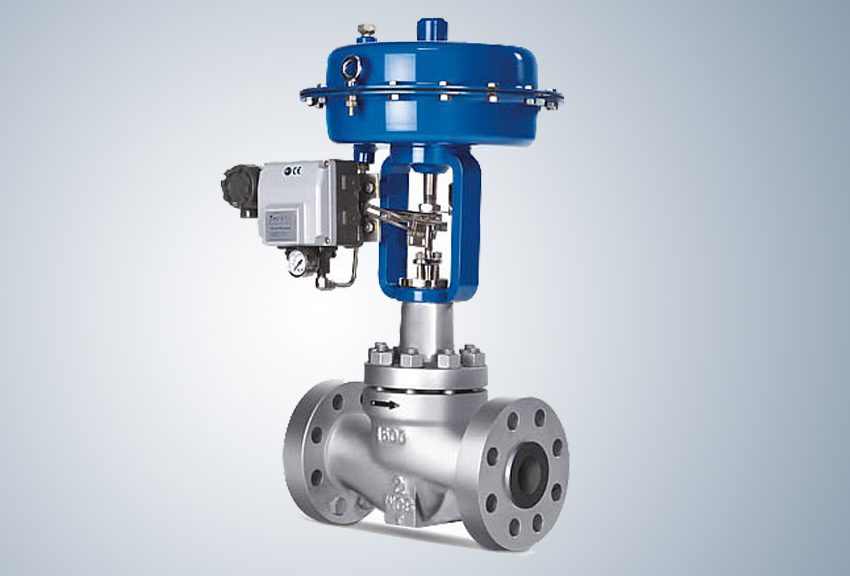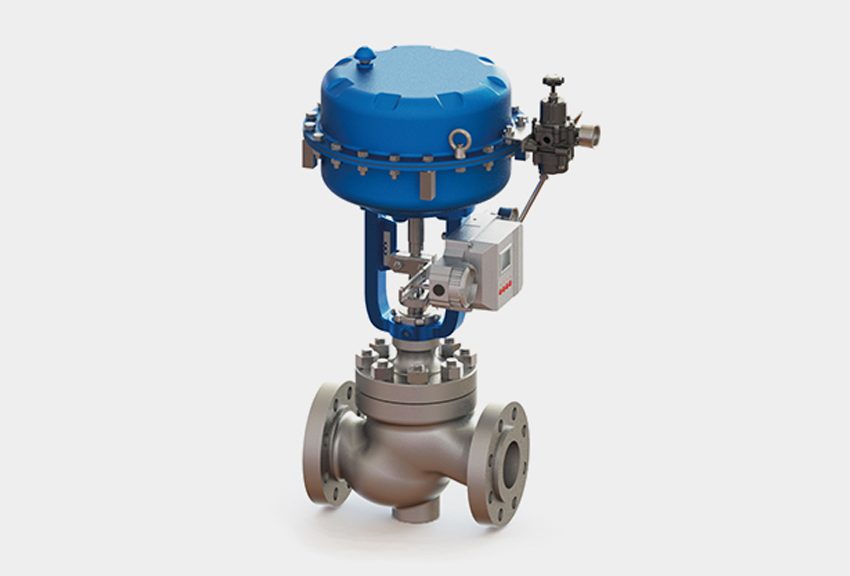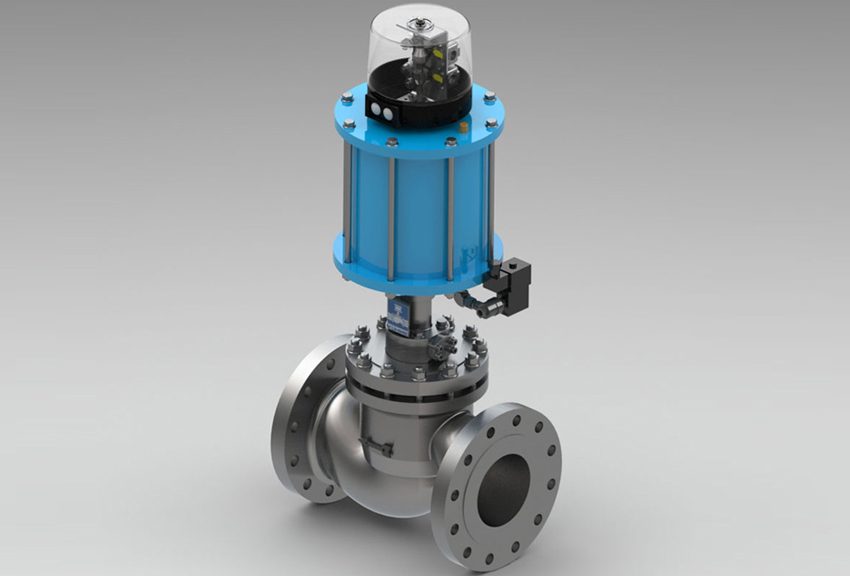A RELIEF / SAFETY VALVE or (Pressure Relief (release) / Safety Valve, PRV/PSV) is a type of safety valve used to control or limit the pressure in a system; pressure might otherwise build up and create a process upset, instrument or equipment failure, or fire. The pressure is relieved by allowing the pressurized fluid (either by manual lever activation or spring or diaphragm operation) to flow from an auxiliary passage out of the system. The RELIEF VALVE is designed or set to open at a predetermined set pressure (accuracy as per ASME standards) to protect pressure vessels and other equipment from being subjected to pressures that exceed their design limits. When the set pressure is exceeded, the relief valve becomes the “path of least resistance” as the valve is forced open and a portion of the fluid is diverted through the auxiliary route. The diverted fluid (liquid, gas or liquid-gas mixture) is usually routed through a piping system known as a flare header or relief header to a central, elevated gas flare where it is usually burned and the resulting combustion gases are released to the atmosphere. In high-pressure gas systems, it is recommended that the outlet of the RELIEF VALVE is in the open air.
Safety Relief & Control Valve
- Home /
- Safety Relief & Control Valve
- Relief Valve (RV): A valve is used on a liquid service, which opens proportionally as the increasing pressure overcomes the spring pressure.
- Safety valve(SV): Used in gas service. Most SVs are full lift or snap-acting, in that they pop completely open.
- Safety Relief Valve (SRV): A relief valve that can be used for gas or liquid service. However, the set pressure will usually only be accurate for one type of fluid at a time.
- Pilot-operated Relief Valve(POSRV, PORV, POPRV): A device that relieves by remote command from a pilot valve which is connected to the upstream system pressure.
- Low-Pressure Safety Valve (LPSV): An automatic system that relieves by the static pressure of a gas. The relieving pressure is small and near the atmospheric pressure.
- Vacuum Pressure Safety Valve (VPSV): An automatic system that relieves by the static pressure of a gas. The relieving pressure is small, negative, and near the atmospheric pressure.
- Low and Vacuum Pressure Safety Valve (LVPSV): An automatic system that relieves by the static pressure of a gas. The relieving pressure is small, negative, or positive, and near the atmospheric pressure.
- Pressure Vacuum Release Valve (PVRV): A combination of vacuum pressure and a relief valve in one housing. used on storage tanks for liquids to prevent imploionor overpressure.
- Snap acting: The opposite of modulating, refers to a valve that “pops” open. It snaps into a full lift in milliseconds. Usually accomplished with a skirt on the disc so that the fluid passing the seat suddenly affects a larger area and creates more lifting force.
- Modulating: Opens in proportion to the overpressure.
JGV Types Of Safety Relief & Control Valves
Spring Loaded Safety / Relief Valve
JGV Safety Relief & Control Valve Range & Specification
| Size | : | 40 mm (1-1/2″) – 1000 mm (40″) |
| Body & Type | : | Bi-Directional, Moulded Liner / Seat, Metal Seated (AWWA C504c), Double Eccentric, Triple Eccentric, Split Body, Rubber / Teflon Lining. |
| Operation | : | Lever, Gear, Actuator (Pneumatic, Electrical) |
| Design Standard | : | BS EN 593 / BS 5155 / API 609, Face to Face Dimensions to BS EN 593 / API 609, Wafer – ANSI B 16.5 |
| Pressure Rating | : | PN 10, PN 16, 150 #, 300 # |
| Testing Standard | : | BS EN 12266-1 (BS 6755-Part 1) / API 598 |
| End Connection | : | Wafer Type, Lugged Type, Flanged. |
| Material Of Construction | : | Standard – WCB, CF8, CF8M, CF3, CF3M, Cast Iron On Request – CN7M, CF8C, Duplex Gr. 4A, Super Duplex Gr.5A / 6A , Nickel Alloy, Monel, Hastelloy, Inconel, SS 904L etc. |
| Trim | : | SS 410, SS 304, SS 316, SS 304L, SS316L, Gun Metal, Monel |
| Customization (On Request) | : |
|

Control Valve
A CONTROL VALVE is a valve used to control fluid flow by varying the size of the flow passage as directed by a signal from a controller. This enables the direct control of flow rate and the consequential control of process quantities such as pressure, temperature and liquid level. The opening or closing of automatic CONTROL VALVES is usually done by electrical, hydraulic or pneumatic actuators. Normally with a modulating valve, which can be set to any position between fully open and fully closed, valve position’s are used to ensure the valve attains the desired degree of opening. Air-actuated valves are commonly used because of their simplicity, as they only require a compressed air supply, whereas electrically-operated valves require additional cabling and switch gear, and hydraulically-actuated valves required high pressure supply and return lines for the hydraulic fluid. The pneumatic control signals are traditionally based on a pressure range of 3-15psi (0.2-1.0 bar), or more commonly now, an electrical signal of 4-20mA for industry, or 0-10V for HVAC systems. Electrical control now often includes a “Smart” communication signal superimposed on the 4-20mA control current, such that the health and verification of the valve position can be signaled back to the controller.J
| Size | : | 40 mm (1-1/2″) – 1000 mm (40″) |
| Body & Type | : | Bi-Directional, Moulded Liner / Seat, Metal Seated (AWWA C504c), Double Eccentric, Triple Eccentric, Split Body, Rubber / Teflon Lining. |
| Operation | : | Lever, Gear, Actuator (Pneumatic, Electrical) |
| Design Standard | : | BS EN 593 / BS 5155 / API 609, Face to Face Dimensions to BS EN 593 / API 609, Wafer – ANSI B 16.5 |
| Pressure Rating | : | PN 10, PN 16, 150 #, 300 # |
| Testing Standard | : | BS EN 12266-1 (BS 6755-Part 1) / API 598 |
| End Connection | : | Wafer Type, Lugged Type, Flanged. |
| Material Of Construction | : | Standard – WCB, CF8, CF8M, CF3, CF3M, Cast Iron On Request – CN7M, CF8C, Duplex Gr. 4A, Super Duplex Gr.5A / 6A , Nickel Alloy, Monel, Hastelloy, Inconel, SS 904L etc. |
| Trim | : | SS 410, SS 304, SS 316, SS 304L, SS316L, Gun Metal, Monel |
| Customization (On Request) | : |
|

An automatic control valve consists of three main parts in which each part exist in several types and designs:
- Valve Actuator : which moves the valve’s modulating element, such as ball or butterfly.
- Valve Positioner : which ensures the valve has reached the desired degree of opening. This overcomes the problems of friction and wear.
- Valve Body : in which the modulating element, a plug, globe, ball or butterfly, is contained.
JGV Control Valves
Linear & Rotary Type Control Valve
Control Valve Range & Specification
| Size | : | 50 mm (2″) – 400 mm (16″) |
| Body & Type | : | Linear & Rotary |
| Operation | : | Actuator (Power Operated) |
| Design Standard | : | BS 1873, Face To Face Dimensions – ASME B 16.10 |
| Pressure Rating | : | PN10, PN16, 150#, 300# , 600# |
| Testing Standard | : | BS EN 12266-1 (BS-6755-PART-1) |
| End Connection | : | Butt-Weld, Flanged RF Serrated |
| Material Of Construction | : | Standard – WCB, CF8, CF8M, CF3, CF3M On Request – CN7M, CF8C, Duplex Gr. 4A, Super Duplex Gr.5A / 6A, Nickel Alloy, Monel, Hastelloy, Inconel, SS 904L etc. |
| Trim | : | SS 410, SS304, SS316, SS 304L, SS 316L, Monel |
| Customization (On Request) | : |
|

JGV offer quality approved range of RELIEF / SAFETY & CONTROL VALVES as per prevailing Industry Standards and as well Client Specifications & Design in varied standard and high grade raw material, to attain maximum level of client satisfaction
General Applications:
PRESSURE RELIEF VALVE (PRV – Safety Valve):
- Sanitary PRV is widely used in high-rise buildings and area with overly high water pressure in urban water supply network, mines etc.
- PRV has the role of improving the running working conditions of the system and potentially water-saving and according to statistics its water-saving effect is about 30%.
PRESSURE CONTROL VALVE (PCV – Safety Valve):
- Hydraulic System (to keep system pressures safely below a desired upper limit to maintaining a set pressure in part of a circuit).
- Non-critical and reasonable load applications with steady running flow rates such as OEM Equipments, Heaters, Chemical Storage Tanks etc.

